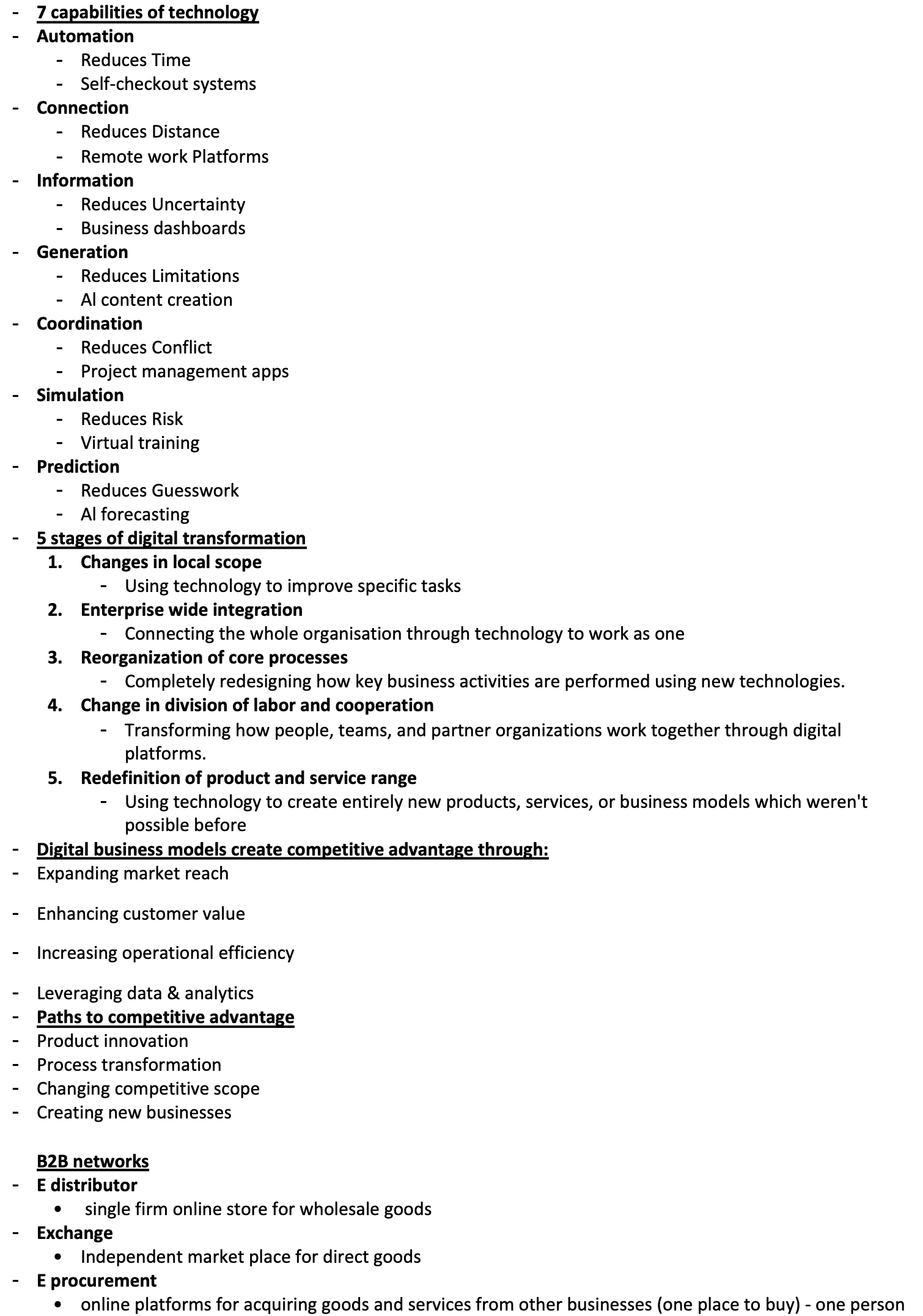Untitled Flashcards Set
7 capabilities of technology
Automation
Reduces Time
Self-checkout systems
Connection
Reduces Distance
Remote work Platforms
Information
Reduces Uncertainty
Business dashboards
Generation
Reduces Limitations
Al content creation
Coordination
Reduces Conflict
Project management apps
Simulation
Reduces Risk
Virtual training
Prediction
Reduces Guesswork
Al forecasting
5 stages of digital transformation
Changes in local scope
Using technology to improve specific tasks
Enterprise-wide integration
Connecting the whole organisation through technology to work as one
Reorganization of core processes
Completely redesigning how key business activities are performed using new technologies.
Change in division of labor and cooperation
Transforming how people, teams, and partner organizations work together through digital platforms.
Redefinition of product and service range
Using technology to create entirely new products, services, or business models which weren't possible before
Digital business models create competitive advantage through:
Expanding market reach
Enhancing customer value
Increasing operational efficiency
Leveraging data & analytics
Paths to competitive advantage
Product innovation
Process transformation
Changing competitive scope
Creating new businesses
B2B networks
E distributor
single firm online store for wholesale goods
Exchange
Independent market place for direct goods
E procurement
online platforms for acquiring goods and services from other businesses (one place to buy) - one person
